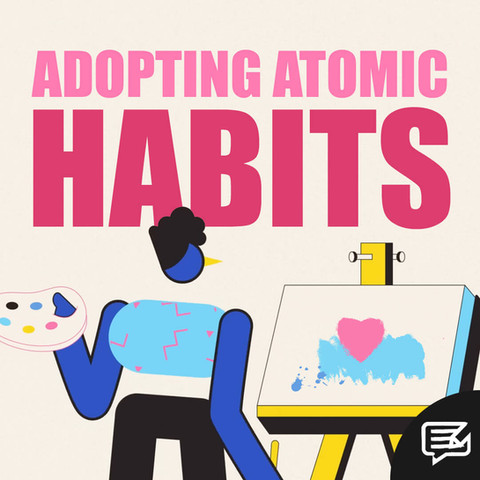
31.07.21
WHAT WE CAN LEARN FROM "A LIFE ON OUR PLANET"
You’ll often hear about “must-watch” television: the latest water-cooler thriller from HBO or the long-awaited finale of *insert generic celebrity “talent” show here*. Rarely should these programmes be considered compulsory viewing.
David Attenborough’s "A Life on Our Planet", on the other hand, very much should be. I’d go as far as to say it should be mandatory for all school-age children to watch at least once.



Yes, there are graphic scenes of death and destruction – the snippets of walruses are particularly disturbing – but perhaps that’s what is needed to jolt the next generation into action and fix the screw-ups of those who came before them.
Humans have wreaked devastation on the natural world: accelerating global warming, destroying habitats and all but wiping out struggling species. The scariest part? Most of this has happened in Attenborough’s lifetime. At 95 years-old (born three years before Anne Frank no less) and a career spanning more than 60 years, it’s fair to say he knows more than most. And if we want to reach our nineties too, it’s high time we started listening.
Earth.org summarises:
“Attenborough maps out how humanity’s wanton destruction of nature will render the planet totally degraded and barren, uninhabitable for millions of people and bringing biodiversity populations crashing. Since the 1950s, animal populations have more than halved, while domestic birds’ populations have skyrocketed; 70% of the mass of the birds on the planet are domestic birds - mostly chickens. Humans account for over one-third of the weight of mammals on Earth. A further 60% of animals are those that are raised for us to eat. The rest - “from mice to whales” - make up just 4%. Domestic animals require vast swathes of land and half of the fertile land on the planet is now farmland.
“Humans cut down up to 15 billion trees per year; this is just one facet of the planet’s degradation thanks to humans, which has resulted in 30% of fish stocks being fished to critical levels and freshwater populations declining by over 80%. The Arctic, one of the coldest and remote places on Earth, has experienced summer sea ice reducing by 40% in 40 years.”
These statistics are truly shocking. Imagine a single tree. The solid trunk, the big branches reaching skywards, leaves rustling in the breeze… Now imagine 15,000,000,000 of them. It’s more than our brains can compute.
And what of the rising temperatures? NASA explains:
“The current warming trend is of particular significance because most of it is extremely likely (greater than 95% probability) to be the result of human activity since the mid-20th century and proceeding at a rate that is unprecedented over decades to millennia.
“Earth-orbiting satellites and other technological advances have enabled scientists to see the big picture, collecting many different types of information about our planet and its climate on a global scale. This body of data, collected over many years, reveals the signals of a changing climate.”
A 2017 article from The Guardian found just 100 companies were responsible for 71% of global emissions:
“ExxonMobil, Shell, BP and Chevron are identified as among the highest emitting investor-owned companies since 1988. If fossil fuels continue to be extracted at the same rate over the next 28 years as they were between 1988 and 2017, says the report, global average temperatures would be on course to rise by 4C by the end of the century. This is likely to have catastrophic consequences including substantial species extinction and global food scarcity risks.”
A four-degree rise may not sound catastrophic in itself – who doesn’t like an Indian summer? – but the longer-term consequences are truly terrifying.
NASA points to nine key signifiers of rapid climate change:
1. Global Temperature Rise:
The planet's average surface temperature has risen about 2.05 degrees Fahrenheit (1.14 degrees Celsius) since the late 19th century, a change driven largely by increased carbon dioxide and other human-made emissions into the atmosphere. Most of the warming occurred in the past 40 years, with the six warmest years on record taking place since 2014.
2. Warming Ocean:
The ocean has absorbed much of this increased heat, with the top 100 meters (about 328 feet) of ocean showing warming of more than 0.6 degrees Fahrenheit (0.33 degrees Celsius) since 1969. Earth stores 90% of the extra energy in the ocean.
3. Shrinking Ice Sheets:
The Greenland and Antarctic ice sheets have decreased in mass. Data from NASA's Gravity Recovery and Climate Experiment show Greenland lost an average of 279 billion tons of ice per year between 1993 and 2019, while Antarctica lost about 148 billion tons of ice per year.
4. Glacial Retreat:
Glaciers are retreating almost everywhere around the world — including in the Alps, Himalayas, Andes, Rockies, Alaska, and Africa.
5. Decreased Snow Cover:
Satellite observations reveal that the amount of spring snow cover in the Northern Hemisphere has decreased over the past five decades and the snow is melting earlier.
6. Sea Level Rise:
Global sea level rose about 8 inches in the last century. The rate in the last two decades, however, is nearly double that of the last century and accelerating slightly every year.
7. Declining Arctic Sea Ice:
Both the extent and thickness of Arctic sea ice has declined rapidly over the last several decades.
8. Extreme Events:
The number of record high temperature events in the United States has been increasing, while the number of record low temperature events has been decreasing, since 1950. The U.S. has also witnessed increasing numbers of intense rainfall events.
9. Ocean Acidification:
Since the beginning of the Industrial Revolution, the acidity of surface ocean waters has increased by about 30%.
When coupled with Attenborough’s predictions for the next 80 years or so – as outlined by the HuffPost - it’s clear that the time for talking is over. Governments, corporations and individuals need to walk the walk – before it’s too late.
“By 2040, frozen soils will thaw, releasing methane into the atmosphere, ‘a greenhouse gas many times more potent than carbon dioxide, accelerating the rate of climate change dramatically,’ says Attenborough.
“By the 2050s, as the ocean continues to heat and becomes more acidic, ‘coral reefs die and fish populations crash’. By the 2080s, 60 years from now, ‘global food production enters a crisis as soils become exhausted by overuse’, he says, ‘pollinating insects disappear and the weather is more and more unpredictable.’
“And by the 2100s, ‘our planet becomes four degrees celsius warmer; large parts of the Earth are uninhabitable. Millions of people rendered homeless, and a sixth mass extinction event is well underway.’”
A mass extinction event?! Not exactly a date you want in your diary… But unlike the dinosaurs before us, we have the technology and know-how to turn things around.
Feeding seaweed to cows, switching to insect burgers and working from home are just a few solutions to aid our cause, but Paul Hawken – author of New York Times bestseller “Drawdown” - chose much bigger fish to fry. His 2017 book, subtitled “The Most Comprehensive Plan Ever Proposed to Reverse Global Warming”, was the focus of an article by Green America. In it, Hawken’s top ten solutions are listed, ranked in terms of emissions reduction potential over a 30-year period.
The top three are:
1. Refrigerant Management:
In October 2016, officials from more than 170 countries gathered in Kigali, Rwanda, to negotiate a deal to address the problem of hydrochlorofluorocarbons (or “HFCs” - chemical refrigerants used in refrigerators, supermarket cases and air conditioners).
The Kigali agreement is mandatory, and will involve the phasing out of HFCs, starting with high-income countries before expanding to low-income countries in 2024 and 2028.
Project Drawdown anticipates a greenhouse gas reduction of between 89.74 – 96.49 gigatons of CO2-equivalent by 2050.
2. Wind Turbines (Onshore):
[In 2017] 314,000 wind turbines supply 3.7 percent of global electricity. It will soon be much more… In the US, the wind-energy potential of just three states—Kansas, North Dakota, and Texas—would be sufficient to meet electricity demand from coast to coast…
Current technologies make it easier to overcome fluctuations in supply and demand. Interconnected grids can shuttle power to where it is needed. Newer turbine designs address concerns over bird and bat deaths with slower-turning blades and siting practices to avoid migration paths. Ongoing cost reductions will soon make wind energy the least expensive source of installed electricity capacity, perhaps within a decade.
Project Drawdown anticipates an increase in onshore wind from 3 to 4 percent of world electricity use to 21.6 percent could result in a greenhouse gas reduction of between 84.6 – 146.5 gigatons of CO2 by 2050.
3. Reduced Food Waste:
The United Nations’ Sustainable Development Goals call for halving per capita global food waste at the retail and consumer levels by 2030, as well as reducing food losses along production and supply chains.
Standardizing date labelling on food packages is an essential step. Currently, “sell by” or “best before” dates and the like are largely unregulated designations, indicating when food should taste best. Though not focused on safety, these markers often confuse consumers about expiration.
Project Drawdown anticipates a greenhouse gas reduction of between 70.53 – 83.03 gigatons of CO2-equivalent by 2050.
Speaking from Chernobyl, Attenborough’s documentary concludes with an emotive piece-to-camera:
“We require more than intelligence. We require wisdom... We alone are able to imagine the future. For a long time, I - and perhaps you - have dreaded that future. But it’s now becoming apparent that it’s not all doom and gloom. There’s a chance for us to make amends, to complete our journey of development, manage our impact, and once again become a species in balance with nature. All we need is the will to do so. We now have the opportunity to create the perfect home for ourselves, and restore the rich, healthy and wonderful world that we inherited. Just imagine that.”
Just. Imagine. That.

























































